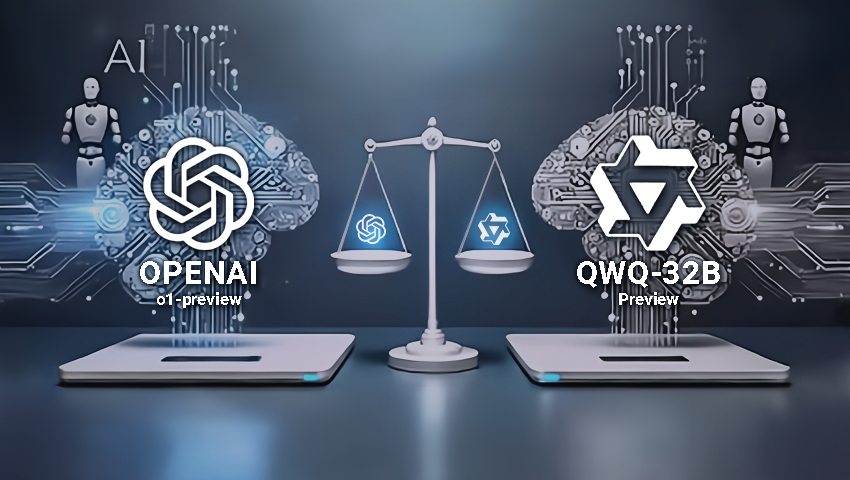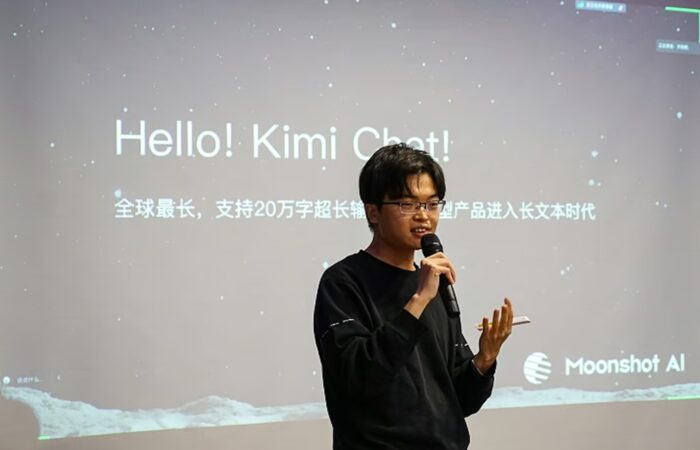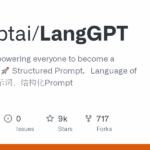
Did you know that by 2030, AI is expected to add nearly $15.7 trillion to the global economy?
That’s more than the current GDP of China!
Tech giants from the U.S. to China compete fiercely to lead the AI revolution.
And at the heart of this race?
Large Language Models (LLMs)—the brains behind tools like ChatGPT and other smart assistants that can write, chat, translate, and even code.
While OpenAI has been the poster child of Western AI success, the East is catching up—fast.
One name in particular is making serious waves: Alibaba Group
With its own LLM, Alibaba is stepping into the ring to challenge the likes of OpenAI.
In this blog, we’ll examine:
- How Alibaba LLM compares to OpenAI’s
- Why this comparison matters
- What it tells you about the future of AI worldwide.
Let’s dive in.
What is a Large Language Model (LLM)?
An LLM (Large Language Model) is a type of AI that can read, write, and respond like a human by predicting the next words in a sentence.
It learns from a huge amount of text—like books, articles, and websites—and uses patterns to generate smart-sounding answers.
LLMs power tools like ChatGPT, help with writing, chatting, coding, and more.
Let’s understand this with a simple analogy.
Ever had a chatty parrot at home?
Imagine one day, you say, “I’m feeling hungry, I need to have some…” and the parrot suddenly blurts out, “Biryani!”
Funny, right? But also kind of smart.
Why did the parrot say “biryani” and not something random like “bicycle” or “book”?
It’s because your parrot has been listening to your conversations for a while.
And based on everything you say, it has learned that when you’re hungry, you’re more likely to mention food—like biryani, pizza, or rice.
So, it guesses the next word based on what it has heard before.
That’s basically how a language model works.
It doesn’t actually understand the meaning of the words.
It just looks at patterns and makes a smart guess about what should come next.
This kind of guessing, based on past data and some randomness, is called “stochastic” behavior.
So, a model like this is often called a stochastic parrot—a parrot that repeats things based on probability.
Now imagine this parrot getting a superpower.
It can now listen not just to your conversations, but also to what people are saying at your neighbor’s house, in schools, offices, universities—even in other countries!
With all that information, this parrot can now:
- Finish your sentences
- Give you nutrition advice
- Help you write a poem
- Or even explain a history topic!
Sounds amazing, right?
That’s exactly what a Large Language Model (LLM) does.
It’s a super-smart computer program trained on massive amounts of text—from:
- Wikipedia
- News websites
- Books
- Online forums, and more.
It learns from all this data and then predicts what words should come next in a sentence.
Behind the scenes, LLMs use a kind of technology called neural networks, which are made up of billions (sometimes trillions!) of parameters.
These help the model understand complex patterns in language—like slang, tone, grammar, and context.
For example, ChatGPT is an app that uses a large language model called GPT-3 or GPT-4.
Now let’s go back to our parrot one last time.
Let’s assume that you’re talking to your little 2-year-old son and say, “Son, don’t eat too many bananas or else…” and your parrot jumps in with, “I’ll punish you with an iron rod!”
Whoa! That’s not okay.
You realize your parrot picked up this harsh sentence from somewhere toxic.
So, you start correcting it.
Whenever it says something wrong, you gently teach it the better response.
Over time, it learns what’s okay to say and what’s not.
This is similar to how OpenAI trained ChatGPT using something called RLHF—Reinforcement Learning with Human Feedback.
Basically, real people guided the model by pointing out good vs. bad answers, helping the model respond in a safer, more helpful way.
So while LLMs are incredibly smart, they don’t have feelings or consciousness like humans.
They don’t truly understand us—they just predict based on data.
And that’s the wonder (and the limit) of LLMs.
OpenAI LLM And Its Global Influence
Let’s talk about OpenAI, the name behind ChatGPT.
If you’ve ever used ChatGPT to write an email, draft a poem, or even solve a tricky coding problem, you’ve already seen what OpenAI’s Large Language Models (LLMs) can do.
OpenAI has built some of the most powerful LLMs out there, like:
- GPT-3
- GPT-4
- Codex (which can even help you write code).
These models have taken the AI world by storm, especially in the Western markets like the U.S., Canada, and Europe.
From businesses to schools, everyone’s trying to plug these tools into their work.
One of the biggest reasons behind OpenAI’s success?
Microsoft.
They’ve partnered closely with OpenAI and even integrated ChatGPT into tools like Microsoft Word, Excel, and Bing.
So, if you’re using any of these apps, chances are you’ve seen OpenAI’s work in action.
Thanks to these powerful models, smart features, and strong partnerships, OpenAI’s reach today is massive.
It’s not just a tech tool anymore—it’s changing how we work, learn, and communicate around the world.
Let’s now take a look at Alibabba’s LLM.
Alibaba LLM: How The East is Catching Up in The AI Race
While OpenAI has been making headlines in the West, China’s tech powerhouse Alibaba is quickly rising as a major player in the world of artificial intelligence.
It all began with DAMO Academy, Alibaba’s dedicated research lab for futuristic technologies—like:
- AI
- Robotics
- Quantum computing.
In 2023, they unveiled Tongyi Qianwen—which translates to “Truth from a Thousand Questions” in Chinese.
Pretty poetic, right?
This is Alibaba’s answer to ChatGPT—an LLM designed to understand and generate human-like responses.
But here’s where it gets interesting:
Alibaba didn’t just build a model and leave it on the shelf.
They put it straight to work.
You’ll now find Tongyi Qianwen powering smart features in apps like:
- DingTalk (Alibaba’s version of Slack), where it helps draft emails, write meeting notes, and respond to messages.
- Tmall Genie (like Amazon Alexa), making voice commands feel more natural and intuitive.
And the best part?
It’s open source and available on Hugging Face—so anyone can experiment with it.
Beyond that, Alibaba is doubling down on AI investments.
They’re not just looking to catch up to the West—they want to lead the way.
With China’s:
- Massive user base
- Deep data pools
- Government support for AI
Alibaba has the scale and ecosystem to move fast.
So while OpenAI may have set the pace, Alibaba is quickly narrowing the gap.
The East is catching up at a good speed.
Who’s really leading the LLM race now?
Let’s find out.
Language Understanding and AI: Alibaba Group’s Tongyi Qianwen vs OpenAI’s GPT-4
| Feature | Alibaba (Tongyi Qianwen) | OpenAI (GPT-4) |
| Language Strengths | Mandarin, regional dialects | English + global languages |
| Integration | Alibaba ecosystem | Microsoft ecosystem |
| Market Focus | Asia-first | Global-first |
| Open Access | Limited | Freemium/Public APIs |
From this, it’s clear: OpenAI is playing a global game, while Alibaba is still very much regional.
But it’s not just about reach—let’s talk speed, strategy, and what really drives real-world adoption.
OpenAI isn’t just keeping up—it’s setting the pace.
From releasing GPT-4 Turbo to building new multimodal features like voice, vision, and real-time tools, OpenAI is innovating at a speed that few can match.
The product cycle is tight, the feedback loop is real-time, and improvements are visible week after week.
This isn’t experimentation for the sake of research—it’s real innovation with immediate impact.
Openness, Accessibility, and Real-World Adoption
OpenAI’s strength doesn’t stop at the lab.
What makes it truly powerful is how open and accessible its technology is:
- API access for developers worldwide
- Seamless integration into products like Microsoft Copilot
- Millions of daily users actively engaging with ChatGPT
- Transparent updates and model documentation
This level of openness fuels trust, adoption, and iterative improvement—because real-world usage feeds back into better products.
When people can build with it, test it, and rely on it—that’s when an LLM becomes more than a model.
It becomes infrastructure.
Why the East is Catching Up Fast (But Still Behind OpenAI)
You might be wondering—how is the East, especially countries like China, catching up so quickly in AI?
Well, for starters, China and other Asian countries are pouring huge amounts of money into AI research and development.
We’re talking billions of dollars being invested to build the next generation of tech.
Then comes the talent.
Asia has a massive pool of:
- Skilled engineers
- Scientists
- AI researchers, many of whom are leading cutting-edge projects in top universities and labs.
Another big reason?
Government support.
In countries like China, the government actively supports AI growth by:
- Funding projects
- Creating policies
- Providing easier access to large datasets—which is crucial for training AI models.
Lastly, there’s a growing push for self-reliance in technology.
Instead of depending on Western tools and platforms, many Asian companies and governments are building their own tech—from chips to software to AI models.
That said, ambition alone isn’t enough.
While these efforts are impressive, OpenAI’s consistent innovation and global accessibility remain the key differentiators that keep it ahead.
OpenAI’s:
- Public-facing development cycle
- Openness to feedback
- Rapid iteration sets a standard that’s not only hard to match but essential for global AI leadership.
The East is catching up, yes—but it’s still playing catch-up in some critical areas, especially when it comes to:
- Openness
- Global collaboration
- Transparency.
And without these, it’s tough to scale in the way OpenAI has been able to.
The Transparency Gap in Alibaba’s LLMs
Alibaba, despite its resources and talent pool, still operates in a largely closed ecosystem when it comes to its LLMs:
- Limited global visibility into model performance or architecture
- Sparse documentation and unclear update cadence
- Restricted accessibility outside of select regions or partnerships
This lack of global transparency and accessibility makes it hard to evaluate, adopt, or trust these models at scale.
While they may be powerful on paper, opacity in AI development is a blocker—not a badge of prestige.
In today’s time, if you’re building in silence, you’re falling behind.
What This Means for the Global AI Landscape
What we’re seeing right now is the rise of two powerful AI giants—the US and China.
It’s almost like the tech world is splitting into two camps: OpenAI and Silicon Valley on one side, and Alibaba and China’s AI push on the other.
This kind of AI bipolarity could mean one big thing: more competition, and that usually leads to faster innovation.
Both sides are racing to outdo each other, and that means better tools, smarter models, and more advanced AI features for users around the world.
But it’s not just about the tech.
Politics and data privacy play a huge role too.
Countries are becoming more cautious about where their data goes, who builds their AI systems, and how much they rely on foreign platforms.
And now with Trump proposing a massive 145% tariff on Chinese goods, the tension could get even more intense.
Moves like this don’t just affect trade—they can fuel the rivalry, push countries to double down on self-reliance, and make the competition fiercer than ever.
It’s like throwing more fuel on an already blazing fire.
Will this lead to global collaboration in AI—or a long-term rivalry?
Hard to say.
But one thing’s for sure: the AI race just got a lot more serious.
East vs West – Who’s Leading?
When it comes to the global AI race, OpenAI is clearly in the lead.
- More accessible
- Constantly innovating
- Already being used across a wide range of industries worldwide.
On the other hand, Alibaba is catching up fast, especially in Asia—thanks to its strong research efforts through DAMO Academy and smart integration into its own platforms.
While Tongyi Qianwen shines in Mandarin and regional applications, GPT-4 is far more flexible and scalable across global use cases.
OpenAI’s freemium model, easy-to-use APIs, and regular updates (like GPT-4 Turbo) have made it popular even among non-tech users.
In comparison, Alibaba’s LLM feels more closed and region-specific.
So, if you’re looking at global reach and everyday usability, OpenAI still holds the crown.
But if your focus is on the Asian market, Alibaba is definitely one to keep an eye on.
Conclusion
Let’s call it like it is—OpenAI isn’t just leading, it’s defining the game.
While Alibaba LLM and other Eastern contenders are making impressive strides, the innovation gap remains significant—and widening.
OpenAI’s models aren’t just technically advanced—they’re battle-tested, integrated across industries, and accessible to millions.
What sets OpenAI apart isn’t just technology—it’s the ecosystem:
- Transparent development
- Developer-first APIs
- Continuous upgrades (like GPT-4 Turbo)
- A community of millions actively shaping AI’s future
Meanwhile, Alibaba’s Tongyi Qianwen remains limited in accessibility, largely regional in impact, and cautious in the rollout.
The future of LLMs will be multilingual and multipolar—but right now, OpenAI isn’t just ahead—it’s defining the frontier.
As the competition between Alibaba Group and OpenAI intensifies, it’s clear that language understanding will be the key battleground for AI development in the coming years.
With both companies pushing the envelope in their respective models, it’s an exciting time for AI, with these innovations poised to redefine how we interact with technology
Want more insights on emerging tech trends? Subscribe to Aibusinessasia’s newsletter
Subscribe To Get Update Latest Blog Post









Leave Your Comment: